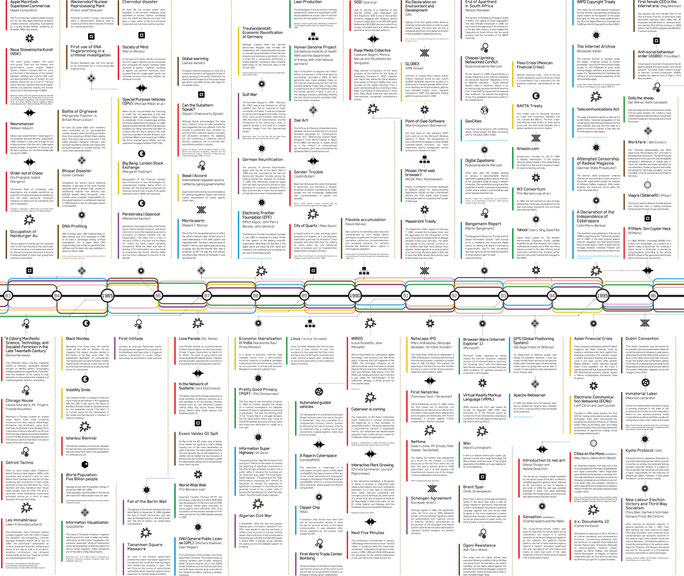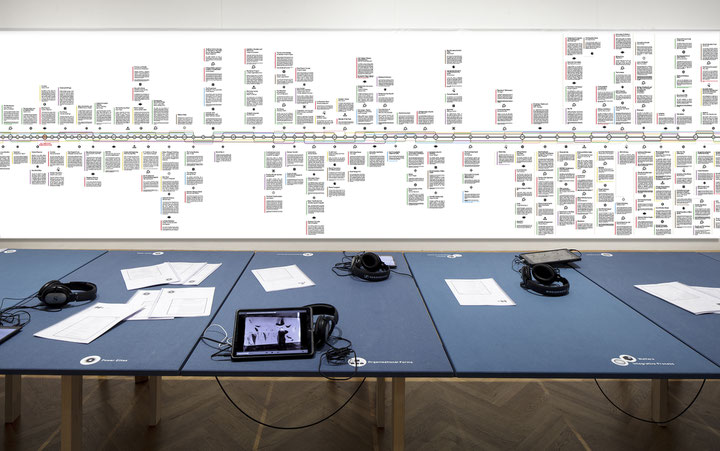Issue 4/2016 - Net section
Technopolitics
Collective research on communication media technology politics
Technopolitics is a Viennese research platforms formed by collective of different theorists, artists, curators, writers and designers. The group includes John Barker, Sylvia Eckermann, Doron Goldfarb, Armin Medosch, Gerald Nestler, Gerald Straub, Felix Stalder, Axel Stockburger, Matthias Tarasiewicz, Thomas Thaler, Sophie Wagner and Ina Zwerger. They intertwined their paths in different ways in the past, but it's the first time that such an effort gathers renown theorist and artists to collaborate and collectively produce initiatives in Vienna, a city which has historically hosted both remarkable and controversial outcomes in critical digital art and culture. The scope of the collective is nonetheless ambitious, as they aim to track "developments in the arts and communication media as well as changing patterns of consumption, circulation, self-organisation and political mobilisation." But this kind of ambitiousness is nor new nor pretentious for them. It seems instead to properly revamp an enthusiasm which used to pervade the early internet criticism through the production of high-level open-content.
The group (started by Medosch and Brian Holmes) meets regularly since 2011 to lecture and discuss, and already organised a few public events. In June 2016 they produced a multi-layered installation and some lectures, hosted by MAK (Museum of Applied Arts), which seemed to be a topical moment in their history.
Particularly, the installation was formed by different elements to explore the concept of "tracing information society." There were a small library and quite a few dossiers whose content was part in print and part in digital form on a few tablets. These dossiers were meant to be enjoyed sitting at a very long desk, which when shared with others, conceptually could easily become a round table. But visually the core of the installation was represented by a huge timeline printed and attached to a wall. In a collective research, a timeline can be a perfect medium as it can host contributions from different participants in the same visual space and all at the same level, so its whole presence somehow gave the size and the complexity of the work done by all the members.
The timeline, concept, and use.
Subtitled "tracing information society," the timeline was defined by the collective as a "conversational piece," so aimed to easily trigger conversations. And as every timeline, it deals with time and history, assembling seminal techno-cultural facts, organisations, events and ideas, like Snowden Leaks or Shadow Banking System, for example.
But beyond its structured content, the timeline is then serving at least two important purposes. The first is to finally provide a critical perspective on the history of communication technologies and their political consequences in a form that can be widely shared, breaking the constant loop of self-gratifying information provided by conversations on social media, prone to the "instantaneousness" of used prose and to the lack of process awareness. The second is to become a cooperative repository of significant changes and evolutions in our lives that almost everybody can identify or being familiar with, instigating then an essential social dialogue around these changes.
So the outcome is much less about comprehensiveness, or academically accurate tracking, than about offering a chance to react through a conversation to the changes the communication and IT industry has induced in our life paths, and how we should start public informal conversations about that, in front of relevant documents like such a timeline.
The timeline contains 471 entries sorted through horizontal categories and vertical tags (the same tags are associated with each "expanded" dossier on the tables), and once printed it was 11 meters long. Its timeframe spans 120 years, but its aim is to establish a "chronological framework", as the authors define it. Then it easily becomes a medium in itself suddenly creating a shared physical colloquial space.
But there's another unexpected purpose: the sharing of instant personal paths, as the collective noticed how people started reading the timeline from their own year of birth. And even if the long banner is printed, so its content is unchangeable, paradoxically the conversational space creates a territory where viewers meet and share their experience and opinions, questioning the content the very same moment they approach it, with their own personal narratives. So basic questions like "why is X not included?" can become immediately start conversations, challenging the very curatorial work behind the timeline form. The collective's plan to have guided tours, workshops, and lectures is perfectly consistent, expanding its potential and obviously generating afterwards, even more, questions and challenges. The complex relationships among the different components of the content are also revealed in another part: a dynamic abstract rendering, authored by Goldfarb using different algorithms and code, allowing the viewer to perceive it a further alternative way.
Here the timeline starts to loose its intrinsic authoritative and documentary nature of pointing to the most relevant elements over a specific period, It offers all kinds of excuses to be questioned, further contributed and changed in an ongoing potentially endless open process. The collective have found a conceptual bug in its visual form, transforming it from a graphical representation to an effective gateway to generate a collective discourse.
The unleashed dynamics.
We've become familiar to infographic as a strongly visual way of communicating complex information. Timelines are a specific form of an infographic, and the technopolitics timeline just meant to be a living cultural object, a sort of evolving interface to media and communication art and its concerns, that allows a collective of theorists and practitioners to share visions and practices, provoking reactions. The enabling of a physically shared space to discuss digital issues seems already a strategical gesture, breaking the social media-induced remote isolation. Furthermore, the dynamics unleashed by this specific timeline are acknowledging it as a political tool, embodying author's respective research on "patterns of consumption, circulation, self-organisation and political mobilisation."
http://www.technopolitics.info/Timeline/

